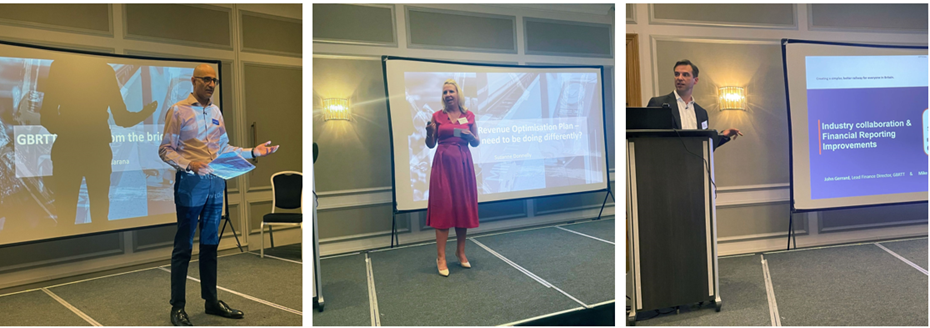Business Planning & Financial Management
Creating a trusted source of financial and business planning information about and for the rail industry
We are working towards a thorough understanding of costs and revenues at a national and local level. This has begun to inform the strategic investment decisions that the industry is making today, with a view of informing the financial decisions Great British Railways (GBR) makes in the future, to make the most efficient use of spending.
The railways are a public service, paid for by taxpayers and passengers. The Plan for Rail states that GBR will be accountable for whole-industry financial management. A whole-industry view will help us identify efficiencies and realise benefits. It will also promote more joined up business decisions to better serve customers and taxpayers.

We are working hard to put the people and systems in place that will enable GBR to manage whole-industry costs and revenue. Cultural change is more important than ever, putting financial understanding at the forefront of our employees’ and stakeholders’ decision making.
By bringing a ‘one railway’ lens to attracting more passengers and freight customers and targeting investment, GBRTT is contributing to reducing the cost to taxpayers of running the railway.
This single perspective on the industry’s costs and revenue will be a crucial part of how GBR makes the railway more efficient and creates a new culture where track and train work better together.
Joining up financial information and sector partners to aid better decisions
GBRTT has engaged with finance experts across the sector to develop the first whole-industry view of rail finances for almost 30 years. Our industry financial model brings together data on Network Rail’s expenditure with the costs and revenues of train operators.
The model is already increasing visibility of how funding is used across the network and enabling better conversations between track and train, and with funders of the railway. It means that decisions on a particular part of the network can be made with a much more detailed understanding of how infrastructure and train services investment interact. For example, we can compare the impact that investment in infrastructure or improvements to services has on farebox revenue and overall subsidy on a specific section of the railway.
GBRTT has been working with Network Rail so that the model could help inform a market-led approach to plans for CP7 and with train operators to put this important tool to use in the here and now. Over £100m in cost reductions has already been identified by Network Rail in its CP7 renewals plans, with investment reallocated to have a greater impact on revenue and passenger experience.

Enabling more informed decisions to benefit everyone
Our current work before Great British Railways is set up is about enabling the Department for Transport, Network Rail and the train operating companies to make more informed decisions. A whole-industry financial view will support:
- More cost-effective use of the rail network.
- Aligned business plans that allow for more efficient delivery.
- Better operational decision making.
- Assurance and visibility of progress on delivery of the £1.5bn reform efficiency savings.
- Greater stakeholder confidence.